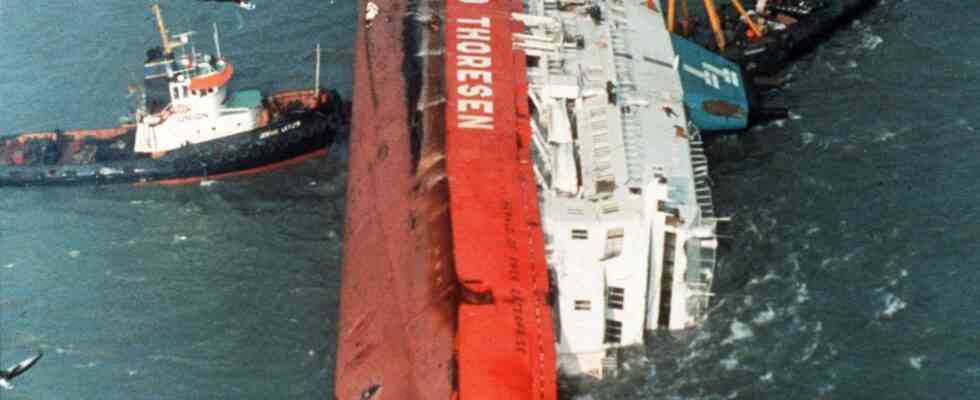It was Britain’s worst shipwreck since the Titanic. On March 6, 1987, shortly after leaving the Belgian port of Zeebrugge, the ferry “Herald of Free Enterprise” sank in the English Channel. 193 passengers were killed.
March 6, 1987 is a cold winter day. The Herald of Free Enterprise is a car and passenger ferry that operates four times a day in the English Channel between Zeebrugge, Belgium, and Dover. Your schedule is tight. The staff only has 90 minutes for unloading, cleaning and loading.
It is 4 p.m. when the second bosun finishes unloading the car deck for the return to England that Friday afternoon. Half an hour later he goes to his crew cabin for a longer break. He will not be needed again until 6 p.m. on the car deck.
At 5 p.m. the first cars and trucks roll through the huge bow doors onto the car deck. Due to the issue of discounted tickets, the rush is large and the crew only has one hour to load. After the lower car deck is loaded, it’s the turn of the upper one. But the loading dock is too short, so the captain has water pumped into the ballast tanks to lower the ferry deeper into the water and shorten the distance to the loading dock.
Shortly after 6 p.m., the ferry is heading for its misfortune
At 6.05 p.m. the ferry leaves the seaport and heads for the icy waters of the North Sea. Since the ship is late, the captain soon accelerates to the maximum speed of 19 knots.
Then suddenly there is a jolt. Huge masses of water penetrate the lower car deck within a few seconds. At 18:28 the ship pitched a full 30 degrees to port. Before he can make an emergency call, the captain is thrown to the ground and unconscious. The ship tilts sideways and the water is now entering through the side windows. Miraculously, the 8,000-ton ferry lands on a sandbank about nine meters below the surface, preventing it from sinking. A circumstance that saves the lives of many passengers.
A nearby ship sees the ferry lights flicker on and then go out. The crew alerted the harbor master of Zeebrugge. He asks all ships in the vicinity to help the ferry.
Meanwhile, the passengers fight for their survival in the pitch-dark interior of the ferry. In the water, which is just three degrees cold, they are at risk of death from hypothermia. “You could hear people shouting and screaming, but that became less and less over time,” an eyewitness recalled in a TV report. Many people can save themselves through windows. “We tried to get on the tables and stay afloat. There was no real panic, but some people started screaming. Then someone smashed the side window and we were all able to climb out,” says a British truck driver. Another Briton spoke of a “nightmare”: “There was water everywhere, everyone was looking for an exit.”
193 people die in the sinking of the “Herald of Free Enterprise”
35 minutes after the capsize, Coast Guard helicopters pick up the first survivors. Local divers who volunteer to help swim through the ferry’s dark interior and rescue those who are still moving. On land, ambulances are transporting the injured to nearby hospitals. Of the 623 people on board, 193 did not survive the ferry accident.
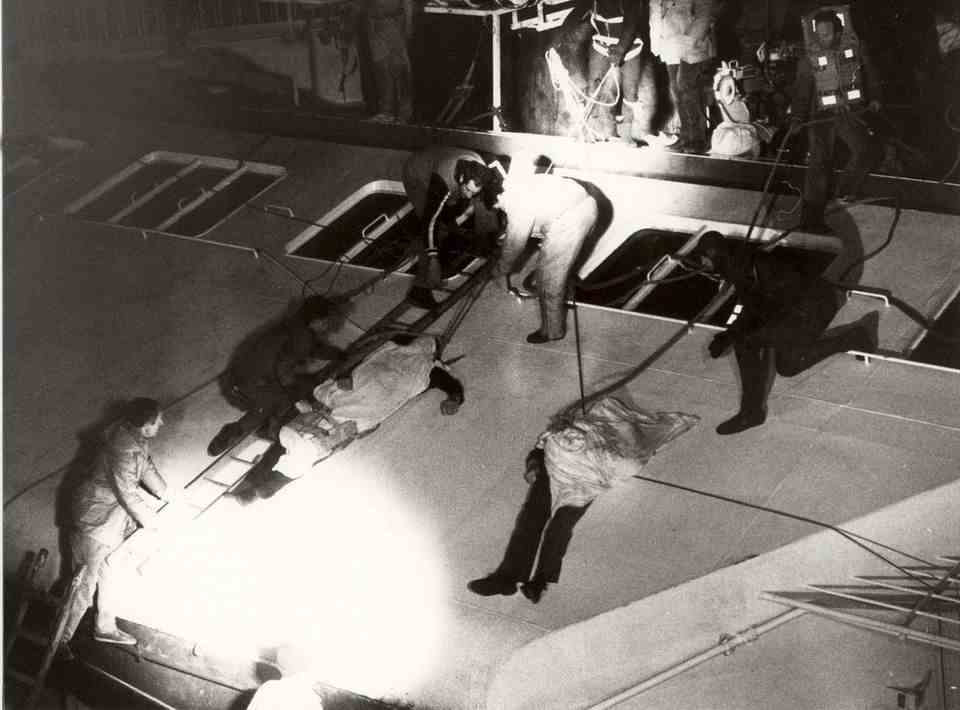
Hours after the accident, the rescue workers can only pull the dead out of the wreck (archive image)
© Belga / Picture Alliance
But how did this catastrophe come about? When investigators examine the ferry the next morning, they see that the five-meter-high bow doors of the ferry are open. And they quickly find out they weren’t damaged in a collision. Questioning of the surviving crew members reveals that the second boatswain was responsible for closing the bow doors that evening. But he lay down to sleep during his break and missed the announcement “All men on ward”.
However, since the task of closing the bow doors was also often left to chance, according to a crew member, nobody else noticed the open bow doors, everyone had relied on the second boatswain. There is no security system on board for such cases. The first officer should have checked the gates again, but because the ferry was late and he was needed on the bridge, he didn’t. If he had stayed at his post three minutes longer, the disaster probably would not have happened, according to the investigation report.
Investigators conduct experiment on sister ship
Nevertheless, according to investigators, open bow doors alone cannot have led to the sinking of the ferry. Four years earlier, the ferry’s sister ship had left Dover with the bow doors open – without any consequences. The fact that the bow doors are also three meters above the water level does not explain why so much water could get onto the car deck. So other factors also play a role: Firstly, that the captain had flooded the ballast tanks because the loading ramp was too short and reduced the distance to two meters and fifty. In addition, the movement of the ship in the shallow water in the harbor basin created a negative pressure that pulled the bow of the ferry down and thus reduced the distance between the bow gates and the water level to one meter fifty.
In order to get to the bottom of the cause, experts conducted an experiment on the ferry’s sister ship, which is identical in construction, nine weeks after the accident. The weather and tide conditions are identical. As they leave port at normal speed, the resulting bow wave breaks well under the bow doors and rolls forward away from the ship. But as they accelerate the ferry, the wave reverses direction backwards. When the top speed is finally reached, the wave measures around four meters and is high enough to flood the bow doors.
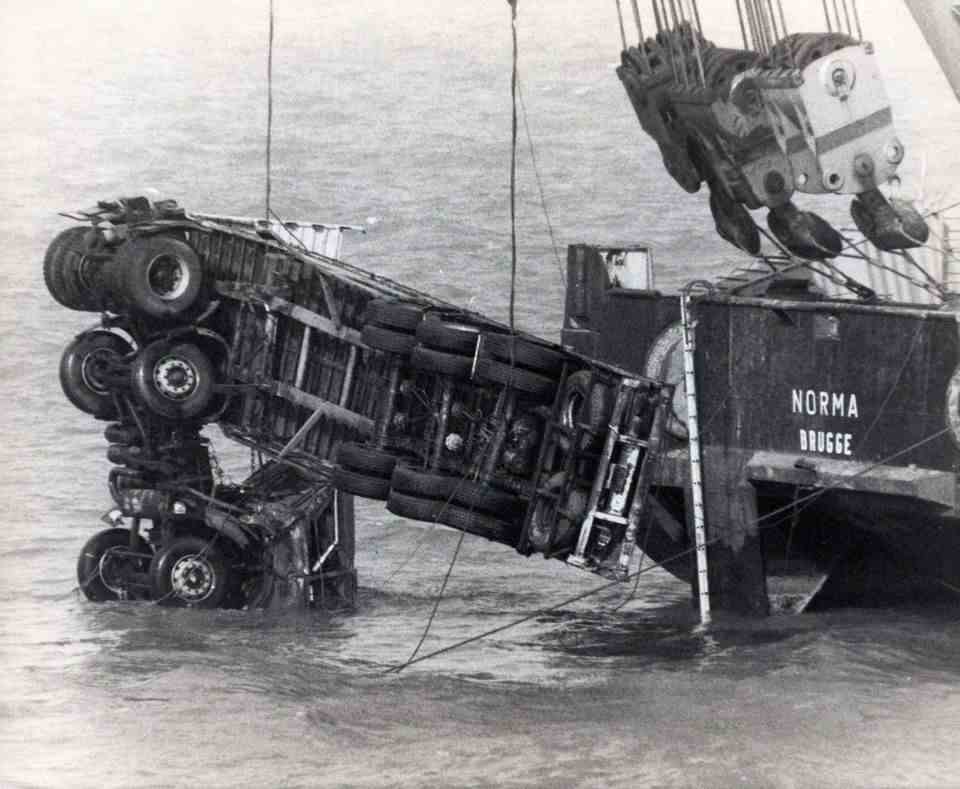
Numerous cars and trucks were on board the ferry, which then had to be salvaged from the English Channel (archive image)
© Imago Images
It is estimated that 2,000 tons of water flow into the interior of the ferry in just 30 seconds. But even such masses of water are not enough for the sinking of such a large ship. The problem: The “Herald of Free Enterprise” has no watertight compartments due to its construction. This allows the entire deck to be loaded and unloaded quickly, and the ferry can leave port again more quickly. A big advantage over the competition. But the biggest economic benefit of the ferry is also responsible for its demise.
Company Townsend Thoresen receives fine
Inside, the masses of water follow the natural movements of the ship, which, as usual, rolls slightly from side to side at sea. The water always follows the lowest point of the ship, which can initially rise again and again. However, due to the rapidly flowing masses of water, it quickly becomes unstable and loses its buoyancy. It keeps tilting – also because of the shifting load. At some point there is so much water in the ferry that it can no longer stand up and falls to the side.
Seven weeks after the accident, salvage companies tow the Herald of Free Enterprise into port.
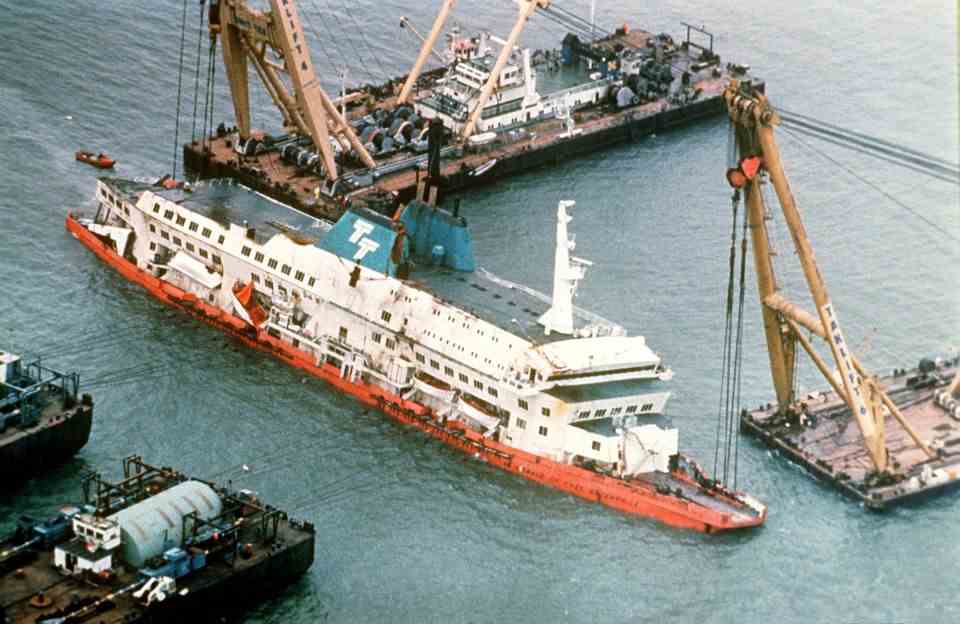
The ferry after being righted again in early April 1987 (archive image)
© Belga / Picture Alliance
The captain is suspended from duty for a year, and his first officer for two. The investigative report comes to the conclusion that the operator, the British company Townsend Thoresen, is responsible for the disaster due to a lack of precautions. The British Department for Transport imposed a fine of 400,000 pounds (about 1.2 million DM at the time).
Celebrities collect for the bereaved
The second boatswain is accused of serious neglect of his duties but is not penalized. As he later told investigators, he was awakened in his cabin by a violent jolt and his first thought was to close the doors he had forgotten to close. He desperately tried to help others. He sustained an arm injury when he smashed a window to save trapped passengers. Feelings of guilt weighed heavily on him throughout his life. He passed away in July 2016 at the age of 58.
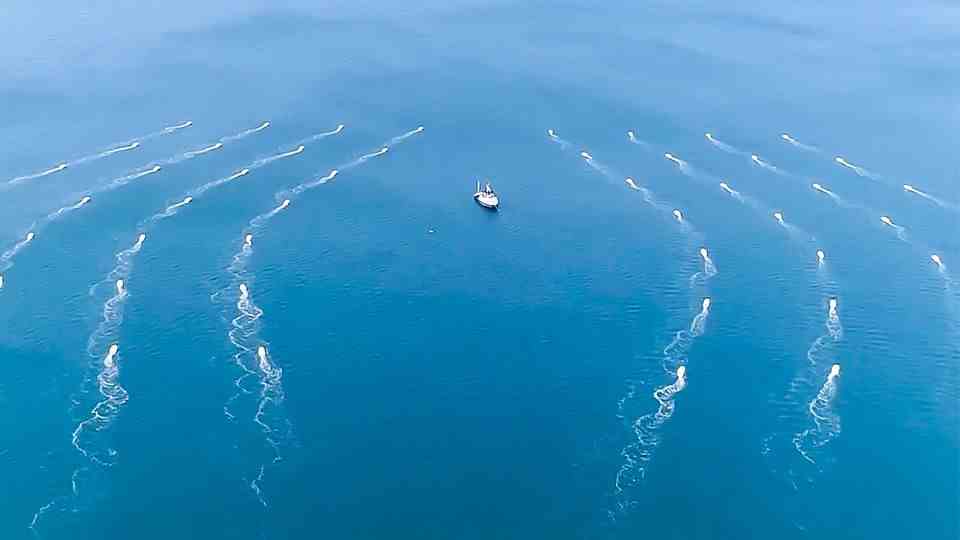
The British government later signed in London a safety regulation for so-called ro-ro ferries (roll on roll off) agreed with other European countries. To prevent such an accident from happening again, cameras and signal displays now enable the ferry captains to monitor the bow gates from the bridge. The ferries must also be fitted with bulkheads that should keep the ship from capsizing for at least 30 minutes in the event of water ingress.
After the disaster, public sympathy is high in Belgium, Great Britain and other European countries. British musicians such as Paul McCartney, Boy George and Mark Knopfler released a cover version of the Beatles song “Let it be” under the name Ferry Aid (Ferry Aid). The proceeds benefit the bereaved families whose lives are changed forever as a result of the tragedy. Even today, the British and Belgians commemorate the victims.
Swell:National Geographic, British Transport Authority investigation report, “Kent Online”DPA

